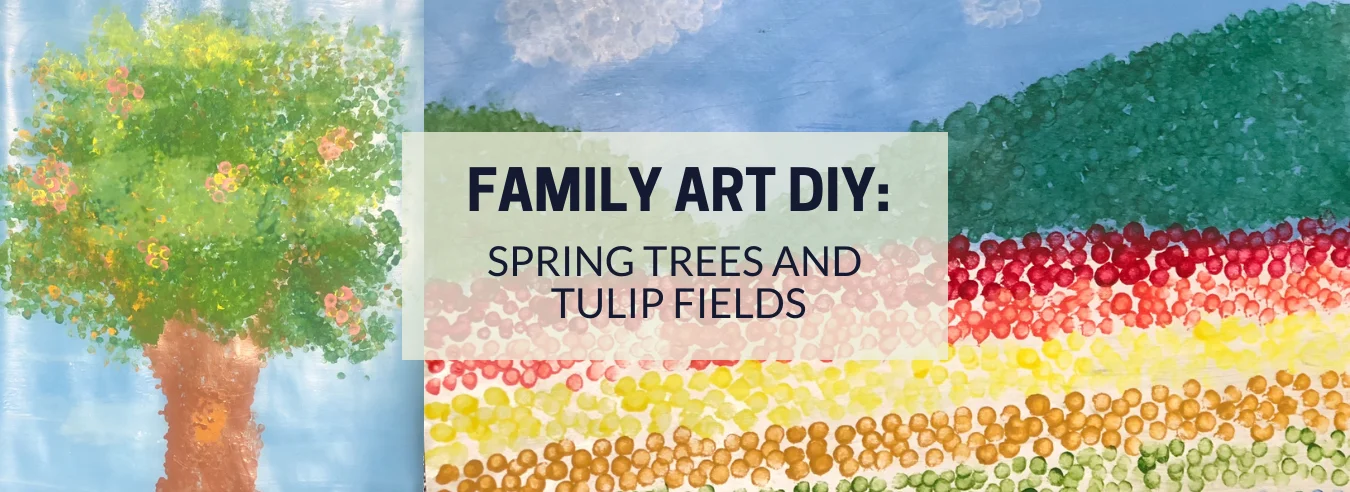Claude Monet is one of the most prolific artists in all of history. His extraordinary Impressionist paintings are instantly recognizable. His plein air landscape paintings capture the movement of nature with each individual brushstroke. Monet is famous for painting the same scenes multiple times to document the changing light throughout the days and the years. His most well-known works feature the water lilies in the ponds at his home in Giverny, France, a subject he painted for twenty years.
Just as we welcome the spring and new beginnings, Monet breathtakingly captured its arrival with his paintings. From flowers to blue skies, and nearby landscapes, the season reveals itself in all its beauty. We have compiled a collection of his most outstanding springtime works below.

An Orchard in Spring. Claude Monet.
Springtime
Sometimes referred to as Woman Reading, Springtime features Monet’s first wife, Camille Doncieux. The piece was painted in the garden of their home in Argenteuil, northwest of Paris. Camille sits beneath a canopy of lilacs and appears content as she enjoys reading a book. She’s wearing a contemporary white and pink lace dress and bonnet while under the shade. Monet plays with the sunlight as it trickles through the leaves and onto the grass and edges of her dress. His brushstrokes show the sway and movement from the wind.

Springtime. Claude Monet.
Spring Flowers
One of his earlier works, Monet painted Spring Flowers in 1864. Monet is quoted with saying, “I perhaps owe having become a painter to flowers.” Could this have possibly been the painting that led to this realization? This still life appears extraordinarily real to the viewer. Each brushstroke leads to the precise crafting of each petal and leaf. The flowers depicted include peonies, lilacs, geraniums, and hydrangeas. The bright, colorful flowers provide a stark contrast to the dark background. The light bounces off and illuminates the flowers in the forefront.

Spring Flowers. Claude Monet.
Springtime at Giverny
Located in the north of France, Giverny was a rural area to which Monet moved in 1883 and enjoyed painting landscapes. He created numerous paintings in the area throughout his career. Some of them even have the same or incredibly similar names. This particular piece, Springtime at Giverny, has very vivid coloring compared to Monet’s other works. The sky is a rich blue and the clouds appear to be floating across the sky. Monet incorporated a variety of brushstrokes into the different subjects in this piece.

Springtime at Giverny. Claude Monet.
Springtime in Giverny
As mentioned above, with just the small change from “at” to “in,” we have Springtime in Giverny. Monet presents us with a green meadow surrounded by tall, pastel-colored trees. The touches of white throughout the wide meadow leads our eyes to a white house in the background. The brightness and warmth are seen throughout the canvas from top to bottom. There is a hint of shadow cast from the sun through the thicker trees on the right.

Springtime in Giverny. Claude Monet.
Spring by the Seine
The Seine is a river northwest of Paris that gently flows to the ocean. It was a popular destination for Parisians to spend their time during this era. Other artists have made it the subject of their paintings as well, but none quite like Spring by the Seine. In this scene, we see people leisurely strolling along the riverbank. The expansive blue sky is full of fluffy white clouds that mix with smoke wafting from the chimneys in the buildings below. The bridge that crosses the river is visible in the background as we see the landscape reflected in the calm waters. This moment captured shows us a glimpse of everyday life in 1878.

Spring by the Seine. Claude Monet.




